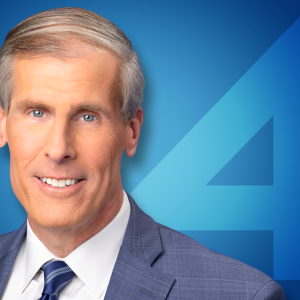*Watch Charles Benson's full story on TMJ4 News at 6 p.m.*
When March rolled around in 2020, Mayor Barrett had a lot to look forward to.
Milwaukee was preparing for 50,000 summer visitors at the Democratic National Convention.
But there was something else on the mayor's mind and it wasn't the virus just yet.
"I remember having a press conference talking about the regular flu," said Barrett.
Flu cases were lingering but a much bigger worry was looming in Seattle, Washington with coronavirus cases and people dying.
The mayor knew it would only be a matter of time before COVID-19 arrived here.
"Perhaps fittingly it was March 13, which was Friday the 13th when we had our first case," said Mayor Barrett. "And I thought OK, this is a problem."
No one knew just yet how big of a problem. The mayor convened a group of hospital administrators, healthcare professionals, and community clinics to talk about the coming crisis.
"One person in that meeting really stood out and that was Dr. John Raymond from the Medical College. I was taken aback about how serious he took this at that second," said Barrett.
Dr. Raymond would become Milwaukee's Dr. Fauci, the go-to guy on everything pandemic. "
"Even in that room he said we should not be sitting this close to each other, we should not be doing this," said Barrett. "And I thought, wow, wow!"
It was the first conversation about what we would all learn to know as the importance of social distancing.
Benson: At what point, Mayor, are you thinking 'I now have to make tough decisions and the decisions I'm going to make, not everyone is going to like?'
Mayor Barrett: That weekend I can remember the conversation I had with our head librarian Paula Kiely, who has since retired.
The conversation was around closings and it was happening all over the city.
"I'm thinking I don't want the libraries closed for two weeks because it could end up being three weeks or four weeks. I never dreamed it would be a year," said Barrett.
There would be more closings as the economic and emotional hardship deepened.
Benson: Was there one decision that was the hardest?
Mayor: I would say the first time we said the bars and restaurants had to be closed because it basically was unprecedented in my career to say we are closing everything down. It was the right decision without a doubt it was the right decision.
COVID-19 was not only changing everyone's way of life by mid-March - it was also hitting communities of color at an alarming rate.
"One of the key points when I first saw the numbers and the first set of numbers came out of a neighbor in the Sherman Park area - where I saw this was having an incredible disproportionate impact on African Americans at that time," said Barrett.
The disparities were not new to a city that declared racism a public health crisis a year earlier.
"I think that was another clarion call," said Barrett. "We have to make sure we are getting the resources to those populations that are most disproportionately impacted and that continues to this day. We've got issues with vaccinations."
With vaccinations, Barrett hopes normalcy will return as we talked on a beautiful spring-like day outside of city hall. The 67-year-old mayor qualified for the shots and is now fully vaccinated.
"The sun is shining, I'm an optimist by nature - we are going to get through this."
TMJ4 looked at the number of coronavirus cases and deaths in Milwaukee compared to other Midwest cities.
Milwaukee with a total population of 590,000 averaged more than 10,000 cases and 100 deaths per 100,000 people in the population.
St. Louis is a city of 300,000 and averaged fewer than 7,000 cases and 140 deaths per 100,000 people.
Kansas City comes in at about 500,000 residents and averaged 7,600 cases with 111 deaths by comparison.
Cincinnati, with 300,000 people, averaged just over 8,000 cases and fewer than 100 deaths per 100,000 people.



